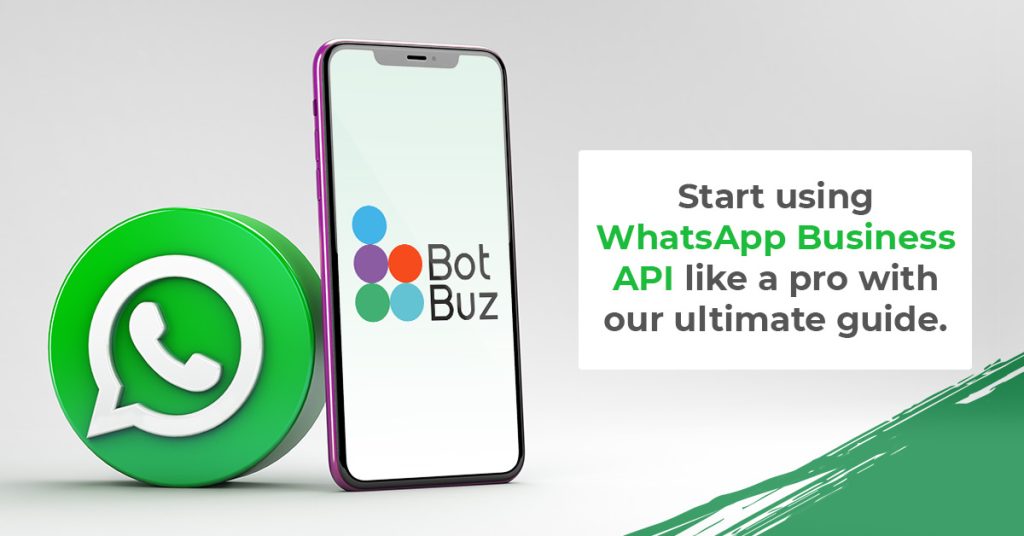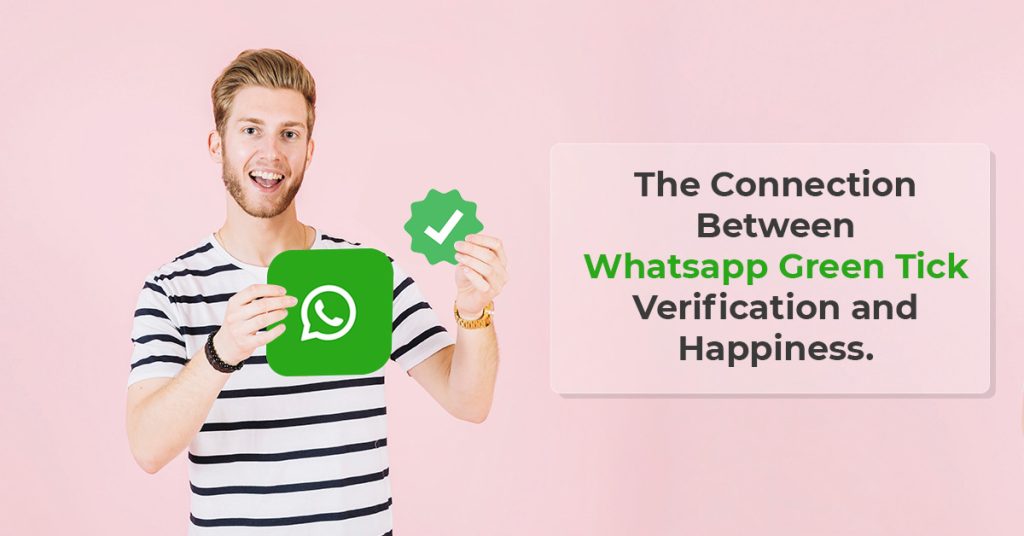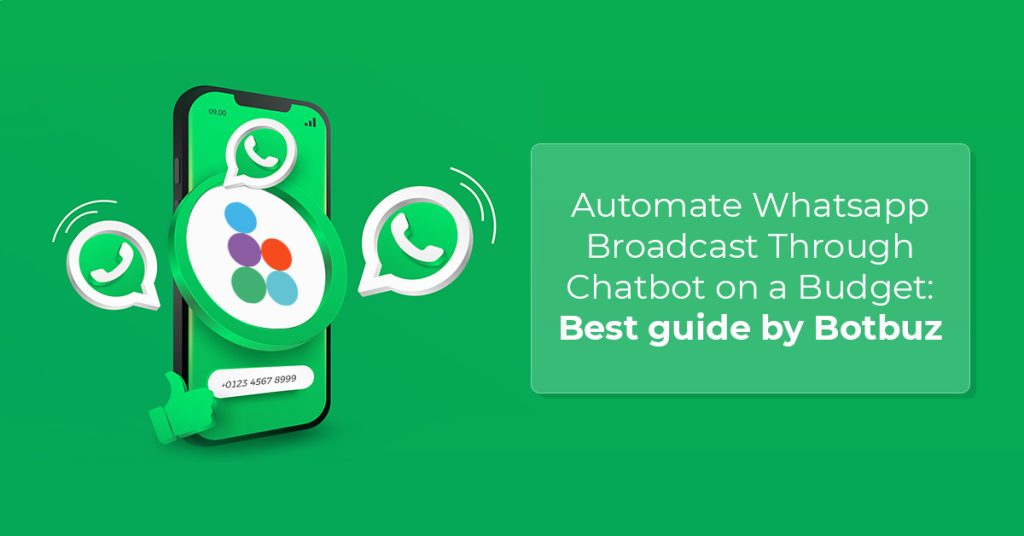- Introduction to Conversational Advertising :
- How Conversational Advertising Fits into Modern Digital Marketing Strategies ?
- Role of AI, Chatbots and Messaging Apps :
- Types of Conversational Advertising :
- Why Do Businesses Need Conversational Advertisements ?
- Redirect Your Customers from Facebook and Instagram to Your WhatsApp Landing Page :
- Using Botbuz Chatbot for Conversational Advertising :
Introduction to Conversational Advertising :
Conversational advertising is a new paradigm in digital marketing. It uses natural language processing (NLP) and artificial intelligence (AI) to enable real-time, two-way conversations between brands and consumers. This interactive approach goes beyond traditional advertising methods. Thus, providing a more personalized and engaging experience.
Importance of Personalized and Interactive Marketing :
In today’s digital age, consumers are increasingly demanding personalized experiences. They want brands to understand their unique needs, preferences, and behaviors. Personalized and interactive marketing can deliver significant benefits, including :
Increased engagement : Consumers are more likely to engage with brands that offer personalized experiences.
Improved customer satisfaction : A personalized approach can lead to higher customer satisfaction and loyalty.
Higher conversion rates : Personalized marketing can drive higher conversion rates. It targets the right audience with the right message at the right time.
Enhanced brand reputation : A brand that successfully delivers personalized experiences can build a positive reputation. Thus, foster trust with its customers.
How Conversational Advertising Fits into Modern Digital Marketing Strategies ?
Conversational advertising offers a powerful way to deliver personalized and interactive marketing experiences. Here’s how it fits into modern digital marketing strategies :
Chatbots and virtual assistants : Chatbots and virtual assistants can be used to provide instant customer support. It can answer questions, and even recommend products or services.
Messaging apps : Businesses can use popular messaging apps like WhatsApp, Facebook Messenger, and WeChat. It helps to engage with customers in a more conversational manner.
Voice search : As voice search becomes more prevalent, conversational advertising can help brands to optimize their content for voice-based queries.
Personalized content : Conversational advertising can be used to deliver personalized content based on a customer’s interests and preferences.
Customer data collection : By engaging in conversations with customers, brands can collect valuable data. It can be used to improve their marketing efforts.
Conversational advertising is a promising new approach to digital marketing. It offers significant benefits for both brands and consumers. By providing personalized and interactive experiences, conversational advertising can help businesses build stronger relationships with their customers. Thus, increasing engagement, and driving sales.
How Does Conversational Advertising Work ? Conversational advertising is powered by a combination of artificial intelligence (AI), natural language processing (NLP) and messaging platforms.
Core Mechanisms Behind Conversational Ads :
Natural Language Processing (NLP) : This technology enables computers to understand and respond to human language. NLP algorithms analyze the user’s input. It identifies the intent behind the message, and generates a suitable response.
AI and Machine Learning : AI and machine learning algorithms are used to continuously improve the chatbot’s ability to understand and respond to user queries. These algorithms can learn from past interactions and adapt to new situations.
Messaging Platforms : Conversational ads are typically delivered through popular messaging platforms like Facebook Messenger, WhatsApp, or WeChat. These platforms provide a familiar and convenient interface for users to interact with brands.
Role of AI, Chatbots and Messaging Apps
AI : AI is the backbone of conversational advertising. It powers the chatbot’s ability to understand and respond to user queries in a natural and human-like way.
Chatbots : Chatbots act as the brand’s virtual representatives. They engage with users in real-time, answer questions, provide recommendations, and even facilitate transactions.
Messaging Apps : Messaging apps provide the platform for conversational advertising to take place. They offer a familiar and convenient interface for users to interact with brands.
Integration with Social Media Platforms
Conversational advertising is often integrated with social media platforms. It helps in reaching a wider audience. For example, a brand might create a chatbot on Facebook Messenger. It can be accessed through a Facebook ad or a direct message. This allows the brand to engage with users in a more personalized and interactive way.
In summary, conversational advertising works by combining AI, NLP, and messaging platforms. It helps in creating engaging and personalized interactions between brands and consumers. This approach offers a more human-centric way. It helps in connecting with customers and driving sales.
Types of Conversational Advertising :
Conversational advertising offers a variety of formats to engage with consumers. Here are some common types :
Chatbots in Ads
Interactive Ad Experiences : Chatbots can be integrated directly into ads. Thus, allowing users to interact with the brand in real-time. For example, a Facebook ad might feature a chatbot that can answer questions about the product or service being advertised.
Personalized Recommendations : Chatbots can use data collected from user interactions. It helps to provide personalized recommendations. This helps to increase the relevance of the ad and the likelihood of conversion.
Messaging Apps Integration
Customer Support : Brands can use messaging apps like WhatsApp or Facebook Messenger to provide instant customer support. This can help to improve customer satisfaction and build loyalty.
Marketing Campaigns : Messaging apps can be used to launch marketing campaigns. It includes promotions, giveaways, or exclusive offers. This can be a highly effective way to reach and engage with target audiences.
Voice-based Conversational Ads
Voice-activated Shopping : Voice assistants like Alexa or Google Assistant can be used to facilitate shopping experiences. Users can simply ask the assistant to search for products, place orders, or get recommendations.
Brand Interactions : Brands can create voice-activated experiences that allow users to interact with their brand directly. For example, a user might ask Alexa to play a specific song or listen to a podcast from a particular brand.
Interactive Pop-ups and Forms
Conversational Landing Pages : Landing pages can be designed to include interactive elements. It includes chatbots or quizzes that engage users and collect valuable data.
Conversational Widgets : Widgets can be embedded on websites or in emails. It helps in providing a more interactive experience. For example, a widget might allow users to chat with a customer service representative or request a quote.
Why Do Businesses Need Conversational Advertisements ?
To Understand Customer Preferences
Conversational advertising provides businesses with a unique opportunity . It helps in gathering valuable insights into customer preferences. By engaging in real-time conversations, brands can:
Gather Customer Insights : Chatbots and virtual assistants can capture data on customer preferences, pain points, and purchase behaviors. This information can be used to improve products, services, and marketing strategies.
Personalize Marketing Strategies : The data collected through conversational interactions can be used to create highly personalized marketing campaigns. This can increase engagement, conversion rates, and customer satisfaction.
To Ensure Data Security
Data security is a major concern for businesses that use conversational advertising. By implementing robust security measures, brands can:
Protect Customer Data : Conversational platforms should be designed with data protection in mind. This includes measures such as encryption, access controls, and regular audits.
Build Trust with Customers : When customers know that their data is safe, they are more likely to trust the brand and engage in conversations.
To Overcome the Limitations of Conventional Chatbots :
Conversational advertising goes beyond traditional chatbots by offering more interactive and engaging experiences. Key differences include :
Natural Language Processing : Conversational advertising uses advanced NLP algorithms. It enables more natural and human-like interactions.
Contextual Understanding : Conversational platforms can understand the context of a conversation. It allows them to provide more relevant and helpful responses.
Proactive Engagement : Conversational advertising can proactively engage with customers, rather than simply waiting for them to initiate contact.
Personalized Recommendations : Conversational platforms can use data collected from customer interactions. It helps to provide personalized recommendations.
Redirect Your Customers from Facebook and Instagram to Your WhatsApp Landing Page :
Pre-Purchase Stage
Engaging Customers with Personalized Advertisements : Use Facebook and Instagram ads to target potential customers. It is on the basis of their interests and demographics. Include a clear call to action (CTA) that encourages users to click through to your WhatsApp landing page.
Utilizing Conversational Ads to Nurture Leads and Answer Queries : On your WhatsApp landing page, use a chatbot or virtual assistant. It helps to engage with visitors and answer their questions. Provide personalized recommendations and offer incentives to encourage sign-ups.
Purchase Stage
Streamlining the Purchasing Process through Direct Conversations : Once a customer has decided to make a purchase, offer the option to complete the transaction directly on WhatsApp. This can streamline the process and reduce friction.
Providing Real-Time Support and Assistance During Checkout : Use WhatsApp to provide real-time support and assistance during the checkout process. This can help to address any questions or concerns and increase the likelihood of a successful purchase.
Post-Purchase Stage
Following Up with Customers for Feedback and Support: After a purchase is made, follow up with customers on WhatsApp to request feedback and offer support if needed. This can help to build customer loyalty and improve future experiences.
Encouraging Repeat Business and Referrals through Ongoing Conversations :
Use WhatsApp to maintain ongoing conversations with customers. It also encourages repeat business and referrals. Offer exclusive discounts, promotions, or early access to new products.
By effectively redirecting customers from Facebook and Instagram to your WhatsApp landing page, you can create a more personalized and engaging customer experience that drives conversions and builds loyalty.
Using Botbuz Chatbot for Conversational Advertising :
Botbuz is a powerful platform. It allows you to create and deploy custom chatbots for various purposes, including conversational advertising. Here’s how you can effectively utilize Botbuz to enhance your marketing efforts :
- Define Your Goals and Target Audience :
Identify Objectives : Clearly outline what you want to achieve with your chatbot. Are you aiming to increase sales, provide customer support, or collect leads ?
Understand Your Audience : Analyze your target audience’s preferences, behaviors, and pain points. This will help you tailor your chatbot’s responses and interactions accordingly.
- Design Your Chatbot’s Personality and Tone :
Create a Brand Voice : Ensure your chatbot’s personality aligns with your brand’s identity. This includes tone, language, and overall demeanor.
Define Conversational Flow : Plan the typical conversation flow your chatbot will follow. Consider different scenarios and potential questions customers might ask.
- Build Your Chatbot’s Knowledge Base :
Populate with Information : Provide your chatbot with relevant information about your products, services, and company.
Utilize Natural Language Processing : Use Botbuz’s NLP capabilities to enable your chatbot to understand and respond to a wide range of user queries.
- Integrate with Your Website and Social Media :
Embed Chatbot : Place your chatbot on your website or social media platforms. Thus, making it easily accessible to customers.
Trigger Conversations : Consider using triggers or keywords to initiate conversations with visitors.
- Train and Test Your Chatbot :
Simulate Conversations : Test your chatbot with various scenarios and questions. It helps in identifying areas for improvement.
Gather Feedback : Collect feedback from users and continuously refine your chatbot’s responses.
- Measure and Analyze Performance :
Track Key Metrics : Monitor metrics such as conversation volume, response time, and customer satisfaction.
Optimize Based on Data : Use analytics to identify areas where your chatbot can be improved and make necessary adjustments.
- Utilize Botbuz’s Advanced Features :
Integration with Third-Party Tools : Connect your chatbot with CRM systems, email marketing platforms, and other tools to streamline workflows.
Customization Options : Explore Botbuz’s customization options to create a unique and engaging chatbot experience.
Conclusion : The Future of Marketing is Conversational
As technology continues to advance, conversational advertising powered by chatbots is poised to revolutionize modern marketing. By providing personalized, interactive, and efficient experiences, chatbots are transforming the way brands engage with their customers.
In conclusion, chatbots are a valuable tool for businesses looking to stay ahead of the curve and deliver exceptional customer experiences. As technology continues to evolve, we can expect to see even more innovative and effective chatbot applications in the realm of conversational advertising.




